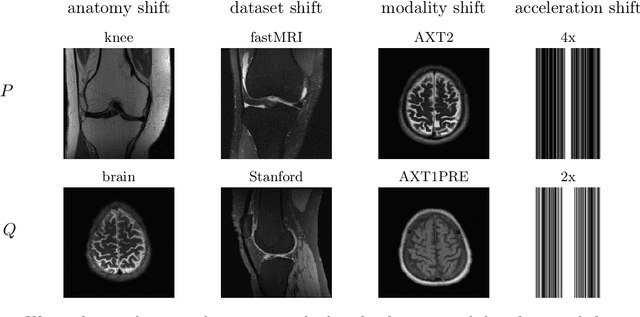Test-Time Training Can Close the Natural Distribution Shift Performance Gap in Deep Learning Based Compressed Sensing
Paper and Code
Apr 14, 2022



Deep learning based image reconstruction methods outperform traditional methods in accuracy and runtime. However, neural networks suffer from a performance drop when applied to images from a different distribution than the training images. For example, a model trained for reconstructing knees in accelerated magnetic resonance imaging (MRI) does not reconstruct brains well, even though the same network trained on brains reconstructs brains perfectly well. Thus there is a distribution shift performance gap for a given neural network, defined as the difference in performance when training on a distribution $P$ and training on another distribution $Q$, and evaluating both models on $Q$. In this work, we propose a domain adaptation method for deep learning based compressive sensing that relies on self-supervision during training paired with test-time training at inference. We show that for four natural distribution shifts, this method essentially closes the distribution shift performance gap for state-of-the-art architectures for accelerated MRI.
 Add to Chrome
Add to Chrome Add to Firefox
Add to Firefox Add to Edge
Add to Edge